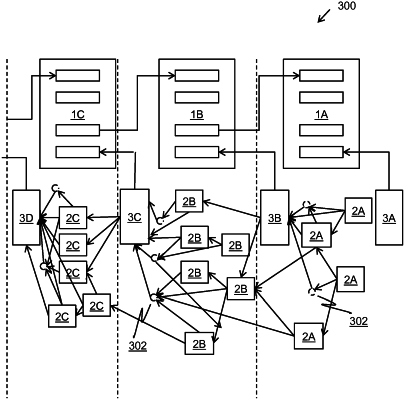| CPC G06F 9/5027 (2013.01) [H04L 9/0643 (2013.01); H04L 9/12 (2013.01); H04L 9/3239 (2013.01); H04L 67/10 (2013.01); H04L 9/50 (2022.05)] | 16 Claims |

|
1. A data processing system comprising a plurality of data processing nodes that are coupled together via a data communication network arrangement, an allocation arrangement for allocation of a plurality of computing tasks, a ledger arrangement, wherein:
the allocation arrangement is a directed acyclic graph allocation arrangement;
the data processing system, when in operation, is configured to distribute the plurality of computing tasks across the plurality of data processing nodes according to the directed acyclic graph allocation arrangement;
the directed acyclic graph allocation arrangement is configured to track and verify the execution of the plurality of computing tasks
the directed acyclic graph allocation arrangement is configured to employ a consensus voting arrangement;
the consensus voting arrangement is configured to employ recurring elections of data processing nodes to control operation of the directed acyclic graph allocation arrangement wherein the control of the operation of the directed acyclic graph allocation arrangement provides incentives for the plurality of data processing nodes to process the plurality of computing tasks, wherein the elections establish a consensus for the ledger arrangement
the ledger arrangement is configured to record the execution of the plurality of computing tasks;
the ledger arrangement is configured to record entries of the elections, the entries being representative of a state of the data processing system and/or its data
wherein the directed acyclic graph-allocation arrangement establishes proof for a next block and the plurality of data processing nodes is configured to obtain votes for a candidate node, wherein the candidate node upon winning becomes an elected leader related to the next block,
wherein a reward is provided to the elected leader for closing the block, the reward is calculated as a product of a total work captured between current proof and a previous proof, an incentive multiplier, a sharing fraction and a conversion rate of work into incentive token.
|